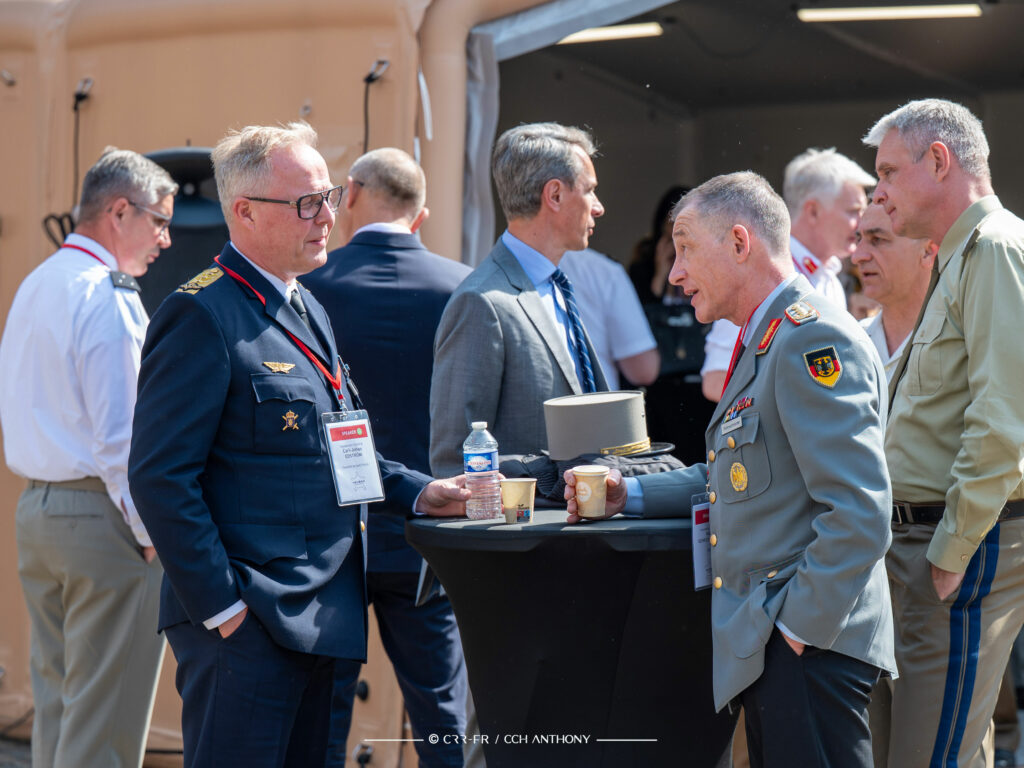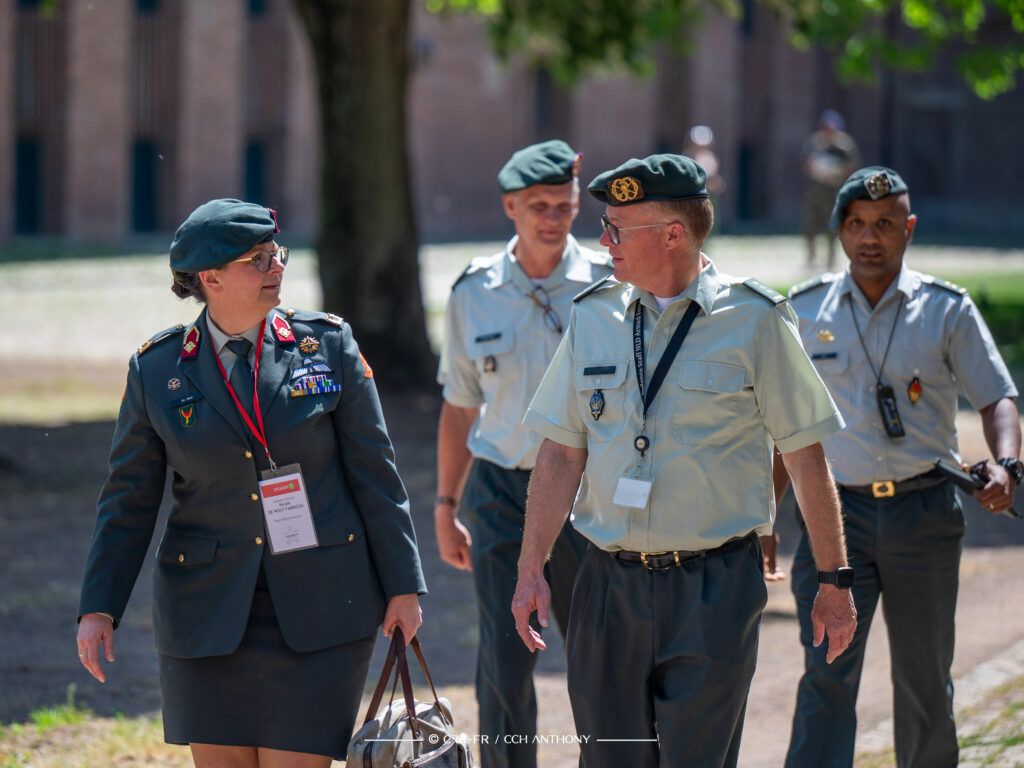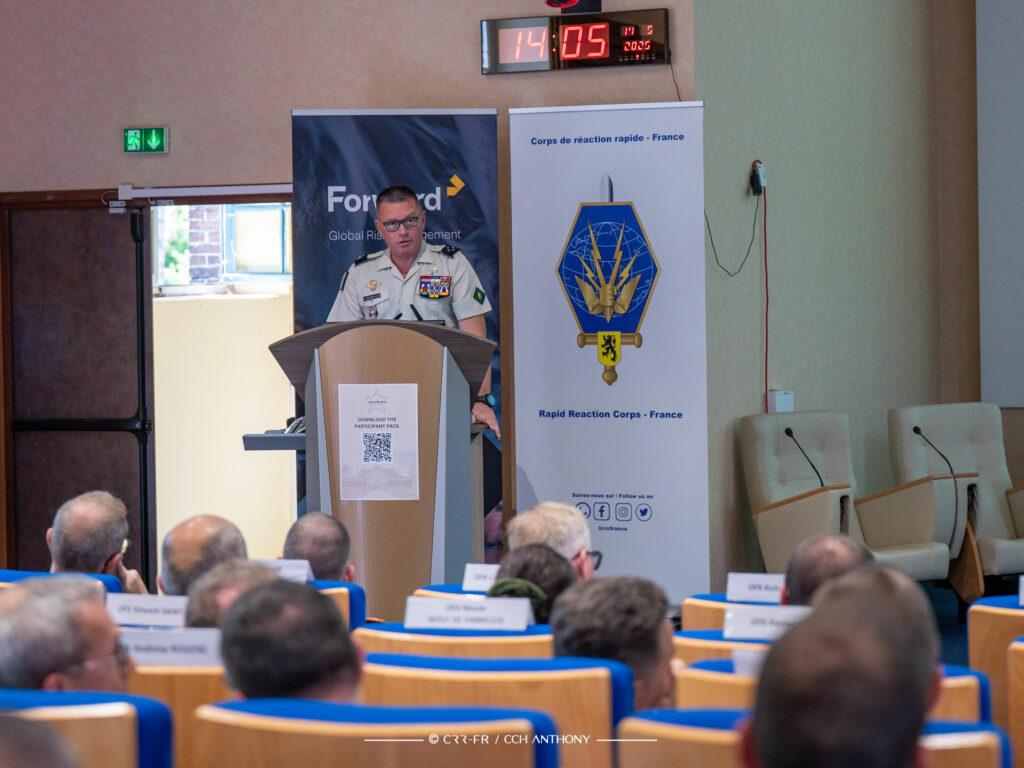The 2025 Vauban Sessions took place at a time of intensifying geopolitical tensions and the renewed prospect of high-intensity conflict in Europe. Senior military leaders from across NATO and the EU gathered in Lille to confront the urgent need to adapt Command & Control (C2) structures, operational concepts and strategic planning to a rapidly evolving security environment. The overarching challenge was framed around the imperative to plan smarter, act faster, and strike harder in an era demanding both resilience and innovation. This year’s debates focused on enhancing resilience not just within military organisations but across societies, recognising that operational effectiveness depends equally on societal readiness, force regeneration, and the ability to sustain prolonged operations. Participants insisted on the necessity of strengthening coalition force generation, improving logistics, and aligning defence industrial capacity with the realities of modern warfare.
The sessions highlighted enduring barriers—ranging from infrastructure and regulation to interoperability and information-sharing—which must be overcome to deliver credible, large-scale deterrence and defence. The integration of advanced digital technologies— spanning mission command systems, AI, and unmanned platforms—was identified as a key enabler for agile and effective C2. Speakers however cautioned that technology must be paired with robust leadership, adaptability, and the development of civil-military partnerships.
njbdjvbdjsbvjbsk
The conclusions and lessons shared at the Vauban Citadel reflect a collective commitment to accelerating the transformation of allied defence structures, aimed at ensuring readiness and survivability in an era of persistent uncertainty.
Strengthening resilience and preparedness
A central theme of the conference was the imperative to build strategic resilience at every level—from individual soldiers to societies and institutions. Resilience is not merely a technical or organisational matter, but fundamentally a societal and psychological challenge. European societies, having enjoyed decades of peace, are now confronted with the need to mentally and materially re-adapt to the prospect of large-scale conflict. Individual and collective resilience are interdependent: individual readiness buys time for collective structures to respond, while societal preparedness underpins the endurance of military operations. Resilience must be conceived as a series of concentric circles, beginning with the individual and expanding to local, national, and international levels. This approach is necessary to absorb shocks, adapt to unforeseen scenarios, and recover rapidly after setbacks.
Another key point was the distinction between resilience and readiness. While readiness consists in having plans and mechanisms in place for known scenarios, resilience is about the capacity to adapt and respond to unexpected futures. The need to foster a shift in mindset, both within military organisations and across societies, was repeatedly highlighted. This includes preparing populations for the sacrifices and disruptions that high-intensity conflict may entail, and re establishing the societal contract which underpins national defence, potentially revisiting concepts such as conscription or national service to address anticipated attrition and sustain force levels.
Optimising force generation and projection
The conference devoted significant attention to the practical and strategic challenges of generating and projecting forces within a coalition framework. The lessons of recent exercises and the ongoing conflict in Ukraine provided a sobering backdrop: while NATO has made progress in planning and readiness, the ability to rapidly deploy and sustain large formations across Europe remains hampered by infrastructural, regulatory, and governance bottlenecks.
Speakers identified infrastructure as a persistent vulnerability. Despite investment, critical gaps remain in transportation networks, ports and corridors necessary for the rapid movement of troops and materiel. Administrative and regulatory obstacles—such as lengthy notification requirements for cross- border movements continue to impede military mobility, highlighting the need for a “military Schengen” to streamline procedures and reduce friction between nations. The discussions revealed that while top-down planning has produced comprehensive requirements, actual force generation and sustainment often fall short, particularly in logistics and support units. There was consensus that a bottom-up approach, leveraging the experience and plans of divisions and corps, is essential to align national capabilities with coalition requirements and to identify realistic solutions for sustainment and interoperability.
The importance of host nation support and the integration of civilian resources into military logistics were also emphasised. Given the scale of operations envisioned, military forces are increasingly dependent on civilian infrastructure and capabilities, necessitating robust coordination mechanisms at all levels. The need to build and maintain sufficient stocks—especially of ammunition and spare parts—was highlighted as a critical enabler of operational endurance. A more agile and collaborative approach to defence industrial policy is key for nations to diversify production, share technology, and reduce regulatory barriers to enable rapid scaling of war production if required.
Advancing technological integration and operational adaptation
Another major theme was the integration of new technologies into command structures and operational concepts. Digital transformation is not an end in itself, but a means to enhance operational effectiveness, survivability, and decision-making speed. The proliferation of digital tools, artificial intelligence, and unmanned systems offers significant opportunities, but also introduces new vulnerabilities and demands for energy, connectivity, and cybersecurity.
Modular and adaptable command post structures must balance the requirements for survivability—by reducing physical footprints and exposure—with the imperative of maintaining connectivity and situational awareness. The lessons from Ukraine and other recent conflicts reinforced the importance of dispersing command functions and leveraging digital networks to enable rapid reconfiguration and continuity of operations under attack.
The use of AI is fundamental to maintaining a competitive edge. AI-enabled systems can accelerate decision cycles and improve information flows, but their integration requires careful alignment with operational needs and robust safeguards against misuse. The challenge lies in aligning innovation with operational realities, in a market where the domination of a small number of large defence contractors can stifle effective innovation. A cultural shift toward planned, iterative innovation—driven by operational feedback and short engineering cycles—was advocated.
Leadership, training, and human factors remain as important as ever. While technological advances are critical, operational success ultimately depends on the quality, adaptability, and resilience of commanders and soldiers. The integration of new technologies must be accompanied by updated training standards, realistic exercises, and a willingness to challenge established doctrines and organisational cultures.





